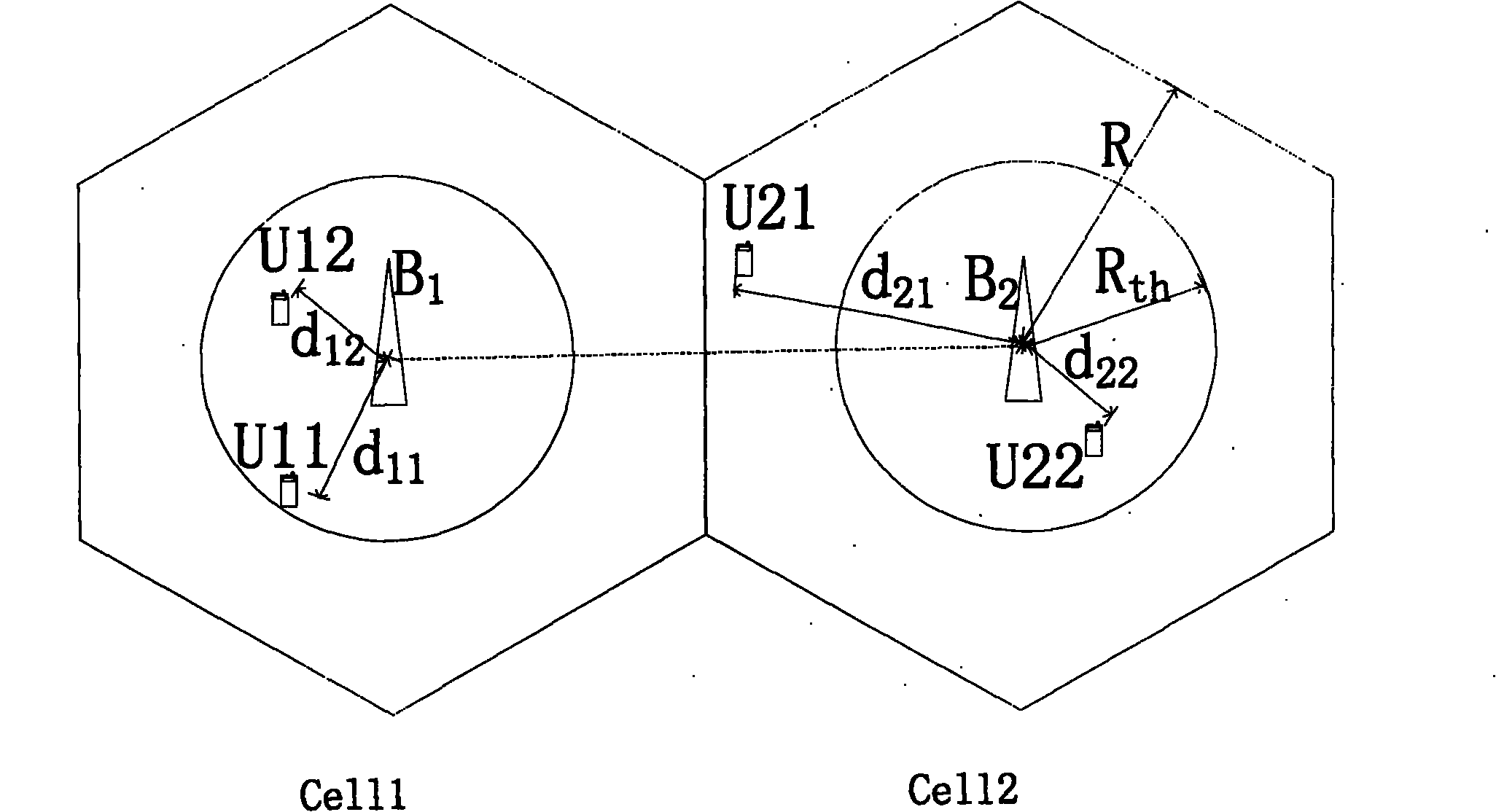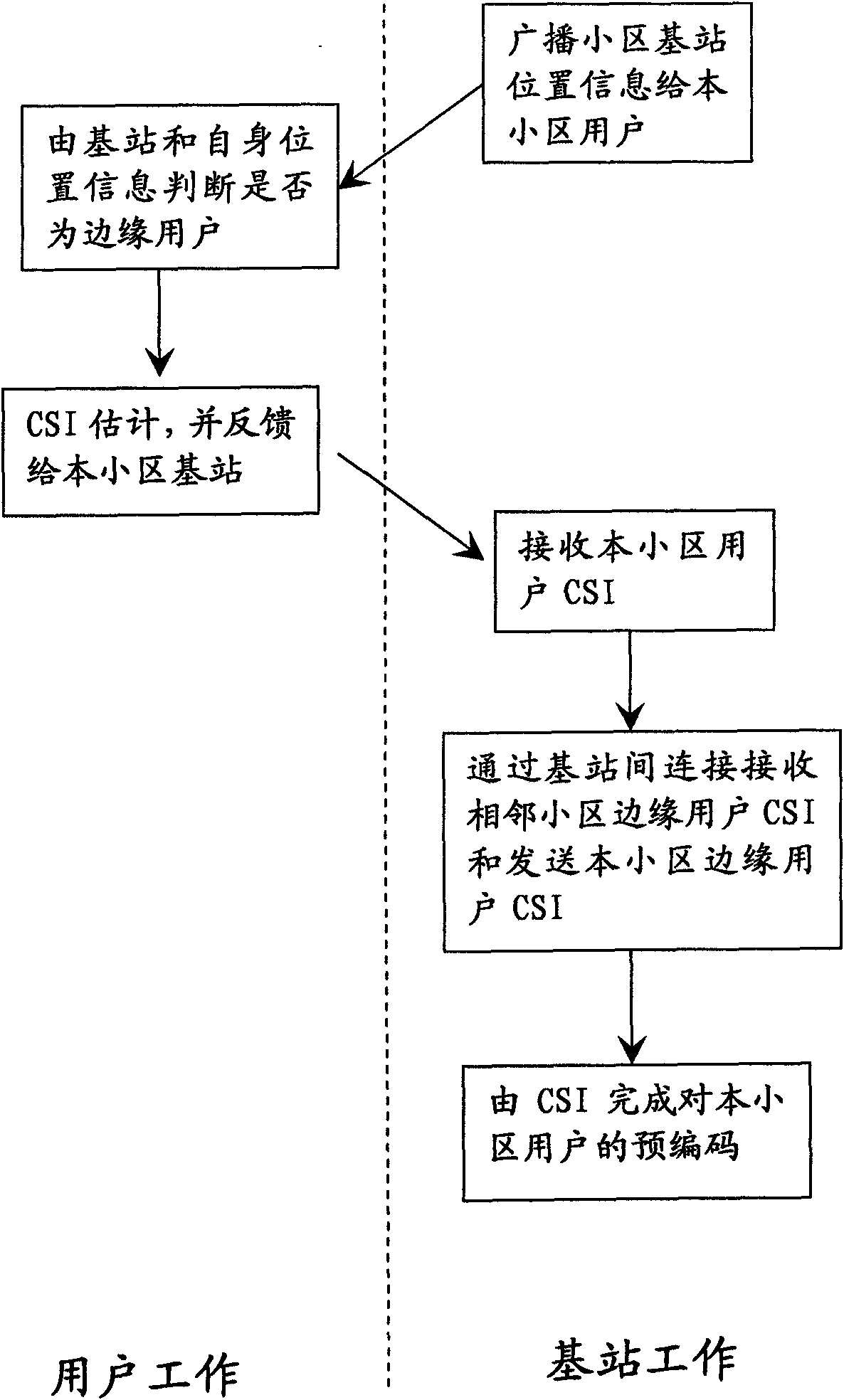Anti-interval-interference base station downlink pre-coding method for multi-cell MIMO (Multiple-Input Multiple-Output) system
A technology of inter-cell interference and multi-cell, which is applied in the direction of transmission system, digital transmission system, error prevention/detection using the return channel, etc., can solve the problems of inter-cell synchronization difficulty and large delay, and achieve the goal of overcoming inter-cell synchronization problems, The effect of overcoming delay and reducing the amount of data transmission
- Summary
- Abstract
- Description
- Claims
- Application Information
AI Technical Summary
Problems solved by technology
Method used
Image
Examples
Embodiment Construction
[0010] It is assumed that the system has only I=2 cells, respectively Cell1 and Cell2. Each cell is hexagonal, and base stations B1 and B2 are located in the center of the cell and have M antennas. The number of users in each cell is K=2, and there are N antennas. The users in Cell1 are U11 and U12, both of which are central users, and the users in Cell2 are U21 and U22, where U21 is an edge user, and U22 is a central user, such as figure 1 shown. Both base station and user have GPS positioning function. Apparently, the signal transmitted by the base station B1 will cause inter-interval interference to U21, and the inter-interval interference can be suppressed through the precoding of B1. Method Implementation Step Reference figure 2 ,Specifically:
[0011] In the first step, B1 and B2 use GPS to obtain their own location information, exchange it with each other, and then transmit it to users through broadcasting. Users also use GPS to obtain their own location informat...
PUM
 Login to View More
Login to View More Abstract
Description
Claims
Application Information
 Login to View More
Login to View More - R&D
- Intellectual Property
- Life Sciences
- Materials
- Tech Scout
- Unparalleled Data Quality
- Higher Quality Content
- 60% Fewer Hallucinations
Browse by: Latest US Patents, China's latest patents, Technical Efficacy Thesaurus, Application Domain, Technology Topic, Popular Technical Reports.
© 2025 PatSnap. All rights reserved.Legal|Privacy policy|Modern Slavery Act Transparency Statement|Sitemap|About US| Contact US: help@patsnap.com



